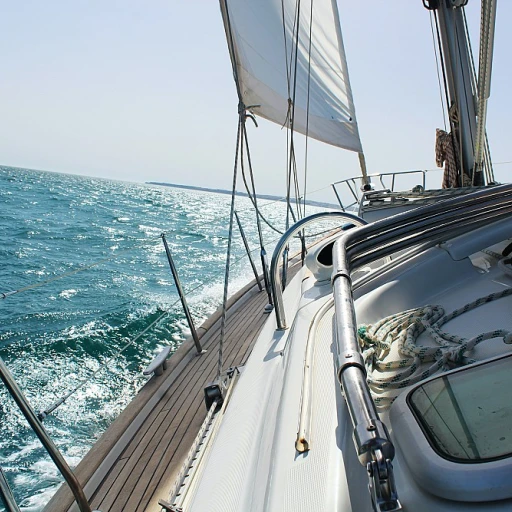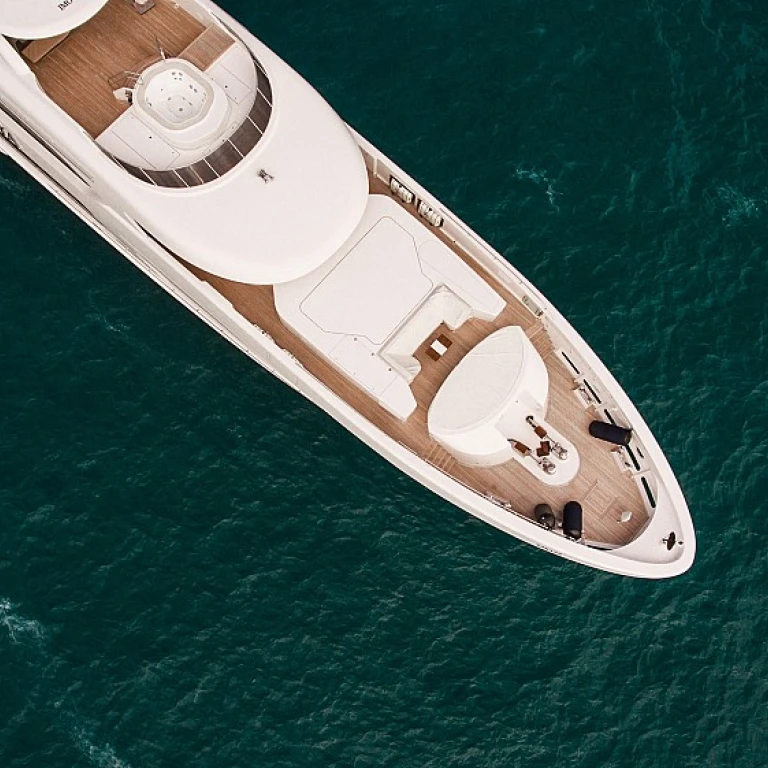Understanding the Role of the Hydraulic Power Lift Cylinder
The Vitality of Hydraulic Power Lift Cylinders for Your Kicker Motor
Understanding the role of a hydraulic power lift cylinder is essential for any boat owner. These indispensable components are the backbone of your outboard motor's trim and tilt system. A well-functioning cylinder ensures smooth operation, allowing you to raise and lower your motor effortlessly, a critical feature for maneuvering in shallow waters or docking.
Hydraulic lift systems use power generated by hydraulic pumps to control the steering, trim, and tilt of outboard motors. This technology offers a significant advantage over manual lifts, reducing physical strain and enhancing precision handling on the water.
For boat owners, hydraulic cylinders are part and parcel of a seamless marine experience, affecting everything from navigating rough waters to easing into the perfect fishing spot. Deterioration of these cylinders can lead to leaks, loss of pressure, and eventually, failure to hold positions properly. It's important to regularly inspect these vital components to ensure the safety and functionality of your boat life.
Exploring more on how to elevate your on-water activities, consider integrating
premium boat grills into your yacht for added enjoyment. Proper maintenance and timely replacements can extend the life of your hydraulic power lift system, ensuring you remain undisrupted by mechanical woes during your adventures.
Signs Your Hydraulic Power Lift Cylinder Needs Replacement
Recognizing Issues with Your Hydraulic Components
A boat owner's keen observation can be the first step in identifying when the hydraulic power lift cylinder of an outboard motor may need replacement. The role of this cylinder, integral to raising and lowering outboard motors, is crucial for maintaining optimal functionality in the water. Recognizing signs of wear or malfunction early can save both time and money. Here are a few indicators that your cylinder might need some attention:
- Difficulty in Operation: If you notice that your outboard motor struggles to raise or lower, or if it seems to stall midway, this could be a sign that the hydraulic lift system is not performing as it should. This difficulty often indicates issues within the hydraulic pump or a failing cylinder.
- Visible Fluid Leaks: Hydraulic fluids are essential for the smooth operation of marine motors. A noticeable leak around the power lift mechanism might suggest a problem with the hydraulic cylinders. This kind of issue needs immediate attention since fluid leaks can lead to inefficient power operation and further component damage.
- Unusual Noises: Listen for any strange noises when using the hydraulic power or attempting a trim tilt. Grinding or squeaking sounds can be indicative of a cylinder that no longer operates as it should. These noises often require a closer inspection of the power steering mechanisms and transom jacks.
- Inconsistent Tilt and Trim: An outboard motor's trim and tilt capabilities are vital to efficient steering and navigation. If the mechanism is becoming erratic or less responsive, it's often a sign that the hydraulic power source or lift components need a thorough check.
Ensuring regular maintenance and promptly addressing these issues will help prolong the life of your hydraulic lift system. For further insights on enhancing your yacht experience, you can explore
this resource on installing a Magma boat grill to complement your boating adventures.
Choosing the Right Replacement Cylinder
Selecting the Optimal Hydraulic Power Lift Cylinder
When it comes to choosing the right replacement cylinder for your hydraulic power lift, several factors should be evaluated. Ensuring that the cylinder is compatible with your kicker motor and the unique specifications of your boat is essential for performance and safety. Here's how to ensure a suitable selection:
- Compatibility with the Boat and Motor: The new cylinder should align well with your outboard motor's type and your boat's design. This connection ensures optimal performance in terms of hydraulic lift and power steering integration.
- Hydraulic Specifications: Dive into the technical requirements for hydraulic pumps, such as hydraulic jack and power trim tilt systems, associated with your setup. These need alignment for smooth functionality.
- Durability and Quality Assessment: Look for marine-grade cylinders designed to withstand water exposure and marine conditions. The materials should be corrosion-resistant and durable to handle the pressures of motor lifts or transom jacks.
- Brand and Manufacturer Reputation: Reliable brands with a track record in producing high-quality hydraulic lifts and hydraulic power components are preferable. Often, marine community forums and boat owner groups can offer valuable replies, views, and messages about cylinder performance.
- Cost and Investment Considerations: While budget is certainly an essential factor, prioritize long-term benefits over upfront savings. Investing in a well-made, reliable cylinder can prove more cost-effective and reduce the need for frequent replacements.
For those seeking more detailed operational insights, exploring the
power and efficiency of Yamaha's 200 HP outboard can provide useful benchmarks for ensuring alignment of hydraulic components with motor capabilities. Keeping these factors in mind should guide you to a smart and reliable hydraulic cylinder replacement, supporting both efficiency and durability.
Step-by-Step Guide to Replacing the Cylinder
Preparing for the Cylinder Replacement
Replacing the hydraulic power lift cylinder on your outboard motor is a task that requires precision and care. Before diving into the actual replacement, ensure you have all the necessary tools and understand the layout of your boat’s motor lift system. This preparation minimizes unexpected challenges during the process.
Dismantling the Old Cylinder
Begin by safely positioning your boat on a stable surface, ensuring the outboard motor is securely lifted and held in place. Disconnect the hydraulic lines leading to the power lift cylinder. This step requires caution, as residual pressure in the hydraulic system could release unexpectedly.
Next, remove any mounting bolts or securing mechanisms. Using a hydraulic jack or a sturdy support, gently lower the outboard motor if needed, to allow for easy access and removal of the existing cylinder. Remember, a well-secured work environment can significantly enhance safety and efficiency.
Installing the New Cylinder
With the old cylinder removed, it’s time to fit the new hydraulic power lift cylinder. Position it correctly, ensuring alignment with the existing hydraulic pumps and outboard motor mounts. Secure the cylinder with the provided bolts or mounting hardware.
Reconnect the hydraulic hoses, verifying they are properly joined and free from any kinks or sharp bends that might obstruct fluid flow. Testing the connections by applying pressure can help identify any leaks or loose fittings.
Testing the Replacement
Once installed, it’s crucial to test the new hydraulic cylinder. Engage the motor lift controls, raising and lowering the outboard motor a few times to ensure fluid movement is smooth and efficient. Monitor the hydraulic system for any signs of leaks or irregularities in the power lift function.
Address any issues immediately, as allowing unresolved problems can lead to more significant challenges later. Keep your repair manual handy for troubleshooting and technical support, or consult boat owners’ forums for replies and views on similar issues.
Throughout this process, remember that patience and meticulous attention to detail are your best allies in ensuring the task is completed successfully. By following these steps, you not only improve the motor lift efficiency but also extend the lifespan of your hydraulic steering and trim tilt systems. Safeguard your boating experience by maintaining high standards of workmanship.
Common Challenges and How to Overcome Them
Overcoming Common Challenges During Replacement
Replacing the hydraulic power lift cylinder on your outboard motor can present a few hurdles, but equipped with some insights, these challenges can be turned into manageable tasks.
Before diving into the installation, confirming that the new hydraulic lift cylinder is compatible with your motor lift system is crucial. Compatibility issues can arise when there is a mismatch between the cylinder and your outboard motor's specifications. Verify model and part numbers to prevent these setbacks.
- Proper Hydraulic Connectors:
Misaligned connectors can often lead to leaks or inefficient hydraulic power steering. Ensuring that hoses and connectors are joined properly and tightened efficiently can avert these issues. Always check for any signs of wear or tear on the connectors, as preemptive measures save time and effort.
It's common to overlook the importance of the environment when replacing hydraulic cylinders. Make sure your boat is positioned securely on the water for the task or consider dry docking if that's more appropriate. A stable environment aids in the precise alignment and securing of components such as transom jacks and jack plates.
Accessibility can be a real challenge. For instance, limited space around the motor lifts can make maneuvering tools difficult. Strategic planning of the access points to different components, including any tilt or trim mechanisms, is advisable.
Once the installation is complete, thoroughly test the hydraulic pump's responses. This includes checking how effectively it raises and lowers the outboard motor with the newly replaced cylinders. Be alert for any unusual replies from the system, such as noises or stutters, which might indicate an issue that needs addressing.
Being aware of these potential challenges and adequately preparing for them can make the process of replacing a hydraulic lift cylinder more efficient, leaving boat owners with a well-functioning hydraulic lift system.
Maintaining Your New Hydraulic Power Lift Cylinder
Prolonging the Lifespan of Your Hydraulic System
Keeping your new hydraulic power lift cylinder in top shape is crucial for maintaining the overall performance of your outboard motor. Here are some practical tips that can help prolong its lifespan and ensure seamless operation:
- Regular Inspections: Periodically check for leaks or any signs of wear and tear on the hydraulic cylinders and associated components. Catching issues early can prevent more significant problems later.
- Hydraulic Fluid Levels: Maintain the correct hydraulic fluid levels. Low fluid can lead to inefficient lifting and may cause undue stress on your motor lift and other components.
- Cleaning: Keep the lift mechanism and surrounding areas free of debris and salt, especially if you are navigating in saltwater. Rinsing with fresh water can help avoid corrosion and build-up.
- Lubrication: Ensure that all moving parts, including those joined mar components within the mechanism, are adequately lubricated to prevent rust and sticking.
- Function Testing: Regularly test the trim and tilt functionality, ensuring that the system can raise lower your outboard motor smoothly and efficiently.
- Use Quality Parts: When replacements or repairs are necessary, use quality marine-grade components to ensure compatibility and longevity of your lift system.
Staying vigilant in maintaining your hydraulic lift system not only enhances your boating experience but also extends the lifespan of your hydraulic jack and motor lift. By following these steps, boat owners can navigate the waters confidently, knowing their hydraulic system is in prime working condition. Keep in mind that good maintenance practices lead to fewer replies views frustrations and more time enjoying the water.

